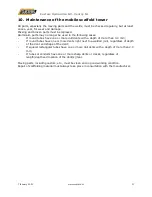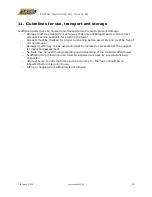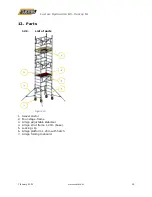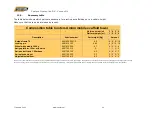
Custers Hydraulica B.V. Venray NL
7 January 2021
www.custers.nl
15
8.
Moving
the mobile scaffold tower:
Check the surroundings for obstacles located around the route to be taken by the mobile
scaffold tower. Provide a clean surface, check the route for potholes/ unevenness / cables/
irregularities/ traffic/ passers-by.
In the event of wind forces greater than 4 Beaufort, the scaffold tower may not be relocated
(4 Beaufort: dust, sand and paper is blown up, small branches are torn off; the wind speed
is 5.5
–
7.9 m/s = ±20 - 28 km/h).
There must be no loose materials or persons on the scaffolding.
The castor brakes must only be unlocked before relocating.
When relocating the scaffold tower, the stabilisers/outriggers may be a maximum of 8 cm free
of the ground.
During relocation of the stabilisers there must be an angle of 40° - 50° to maximise length and
width.
The scaffolding may only be moved in the longitudinal direction by hand, preferably by two
people. Make sure that the tower does not warp during repositioning. Once the mobile scaffold
tower is in position, immediately lock all castor brakes by pressing the brake pedal at each
wheel.
After relocating, the mobile scaffold tower must be levelled again and must not be out of the
plumb in excess of 1%. (1% = a maximum of 1 cm inclination measured per 1 metre)
After aligning the mobile scaffold tower with a spirit level, adjust the stabilisers/outriggers in
such a way that they make contact with the ground again.
Before putting the mobile scaffold tower into use, check that the legs/arches are in contact with
the ground.
Attention:
If the above procedure cannot be complied with, the mobile scaffold
tower must be disassembled and assembled at its new location.

























